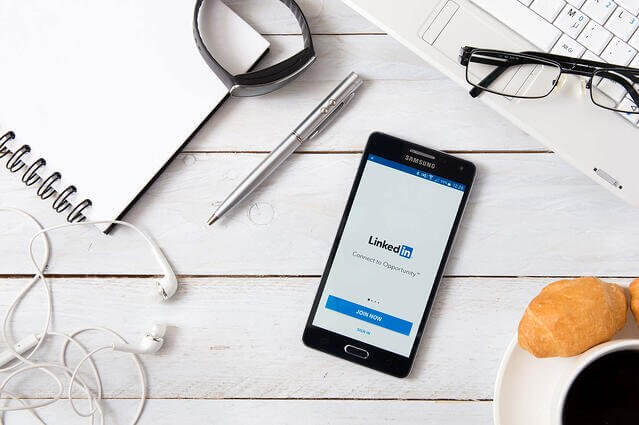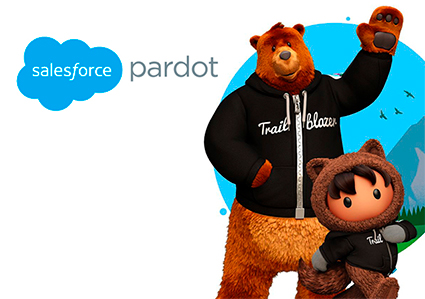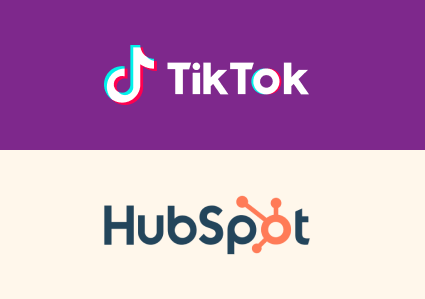For some years we have been designing and executing for some of our B2B customers Pardot campaigns with lead generation forms or Lead Gen Forms offered by some social networks. In today’s article, we will delve into the use of those campaigns on the LinkedIn Ads platform and offer some recommendations that will allow us to decide when you should take users to a Pardot landing page and when to a LinkedIn Ads Lead Gen Form.

Lead Gen Forms. Contact Generation Form
Social networks increasingly collect more information about their users. And the Contact Generation Forms are a small sample of the power of these platforms when using this information, in this case, made available to brands to increase the conversion rate and decrease the cost per lead.
When we click on the LinkedIn ads for the purpose of Contact Generation we are not adressed to a landing but instead a pre-filled form is displayed with the data that the advertiser has decided to include: personal data such as names, surnames, telephone numbers or email, employment data, as the company where you work or your position, and even your academic data. Then, the users when they see all their data in the form, they can decide if they want to send it immediately without having to leave LinkedIn, get to a landing or fill out a form on that landing page.
The problem with these contact generation forms is the impact they have on the potential customers, when they see all their data completed and ready to be sent. With the growing concern for privacy and security, a group of users could see these forms as invasive and in some way feel that it is violating their privacy or security. But, another group will simply appreciate having the form ready to send and have quick access to the offer, information or resource that we show in the advertisement. There is also a third group, also a minority group, that after clicking, simply submits the Contact Generation Form by mistake or without having the slightest idea why it was sent.
It is important to note that these Lead Generation campaigns, unless we use special audiences, contact lists or remarketing lists, are part of the top area of the conversion funnel or what we call “discovery” and therefore we must include that lead in a nurturing process that finally turns it into a customer.
LinkedIn contact generation forms beat Pardot landings in quantity, conversion rate, and cost per potential customer. However, they lose in quality since the leads we achieve on a Pardot landing will always have better quality than those obtained in a Potential LinkedIn Generation campaign.
Another positive point of the LinkedIn Ads Lead Gen Forms is the ease in the implementation of the campaign and the quick creation of a form. Our recommendation in this regard is to create forms with the precise information we need and not to use fields that will later serve us within the Pardot ecosystem. In addition, we recommend connecting these forms with Pardot through tools such as LeadsBridge or Zapier so that the lead arrives at the moment and, from its arrival, start the necessary automations to send the advertised resource, offer or request for information.
Landing Pages of Pardot
All this does not mean that we should stop using the Pardot landings. In our experience, the users who arrive at the landing convert to a lesser extent but have more quality and progress better within the funnel. Another important point that affects the conversion rate is whether your audience is a completely new prospect or if it is already in a deeper phase of interest or consideration.If the prospect is new, it will become less of a landing but, if this prospect has already had contact with us before, we could use progressive profiling from Pardot to collect more data or take it to a lower area of the funnel, where we can offer him a test, demo or an offer In these cases, undoubtedly, the Pardot landings are excellent and have the advantage.
Another fundamental aspect for all of us who create B2B marketing strategies is the monitoring and parameterization of campaigns through the UTMs values. These values in the URL of the announcements will allow us to track each prospect and adequately calculate the success of our actions. In this case, many know that when taking the potential client to a Pardot landing, we must have the URL tracked with their respective UTM, but this is also possible in the LinkedIn Ads Contact Generation Forms, through the hidden fields.In these hidden fields we can include data from UTMs so as not to leave any prospect untracked.
Given the European and world panorama of the moment, many B2B companies make great efforts to get leads and these are being harder to get every day.
For this reason, it is important to concentrate efforts on an open strategy to always try all possible approaches and variants, rigorously following up on all the tests we do, keeping ourselves open to new ideas and with constant communication with the commercial team who, in the end, are the ones who will tell us which campaigns are bringing better results to our companies.
If you liked this article you may also be interested:
- Cómo crear un centro de preferencia multi-idioma en Pardot
- Reglas de Automatización o Automation Rules en Pardot
- ¿Qué tipo de negocios deberían invertir en Google Ads?




